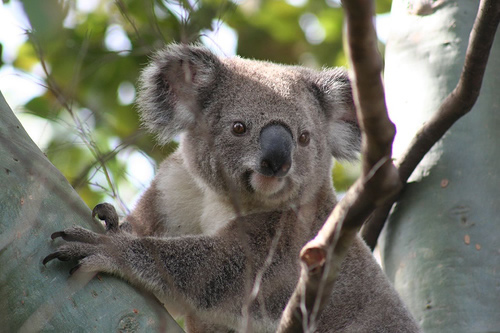Koala Retrovirus: Difference between revisions
| Line 30: | Line 30: | ||
[2] Tarlinton R, Meers J, Young P. 2006. Retroviral invasion of the koala genome. Nature. 442: 79-81. | [2] Tarlinton R, Meers J, Young P. 2006. Retroviral invasion of the koala genome. Nature. 442: 79-81. | ||
[3] Hanger JJ, Broham LD, McKee JJ, O'Brien TM, Robinson WF. 2000. The nucleotide sequence of Koala Retrovirus: a Novel Type C Endogenous Virus Related to Gibbon Ape Leukemia Virus. Journal of Virology. 74(9): 4264-4272. | |||
<br><br> | <br><br> | ||
Page authored for [http://biology.kenyon.edu/courses/biol375/biol375syl08.htm BIOL 375 Virology], September 2010 | Page authored for [http://biology.kenyon.edu/courses/biol375/biol375syl08.htm BIOL 375 Virology], September 2010 | ||
<!--Do not edit or remove this line-->[[Category:Pages edited by students of Joan Slonczewski at Kenyon College]] | <!--Do not edit or remove this line-->[[Category:Pages edited by students of Joan Slonczewski at Kenyon College]] | ||
Revision as of 01:20, 22 September 2012
A Viral Biorealm page on the family Koala Retrovirus

Koala Retrovirus, otherwise known as Koala Immunodeficiency Virus, is a retrovirus that infects Koalas (Phascolarctos cinereus), primarily in populations located in mainland Australia. Koala retrovirus is believed to be a primarily endogenous virus present in a large proportion of Australian koala populations. Studies have suggested that the virus is responsible for the very high incidence of chlamydosis, leukemia, and lymphoma seen in koalas [1]. The primary method of viral proliferation is vertical transfer via an endogenous form of the virus, while evidence exists that the virus is transmitted horizontally only through close contact between individuals [2].
Virus Classification
The koala immunodeficiency virus is a retrovirus falling into the group VI division of the Baltimore Classification system. Koala retrovirus virions contain positive-sense single stranded RNA, and have a DNA intermediate in their replication cycle (+ ssRNA-RT). Koala retrovirus belongs to the family Retroviridae, and the genus Gammaretrovirus. Particular species of the virus are yet to be identified. However, studies have indicated that that the virus showed a high degree of homology (78% nucleotide similarity) with the Gibbon Ape Leukemia Virus(GALV), as well as other simian type-C retroviruses[1].
Higher order categories
Description and Significance
Genome Structure
Virion Structure of a ______virus
Reproductive Cycle of a ______virus in a Host Cell
Viral Ecology & Pathology
References
[1] Tarlinton R, Meers J, Hanger J, Young P. 2005. Real-time reverse transcriptase PCR for the endogenous koala retrovirus reveals an association between plasma viral load and neoplastic disease in koalas. Journal of General Virology. 86: 783-787.
[2] Tarlinton R, Meers J, Young P. 2006. Retroviral invasion of the koala genome. Nature. 442: 79-81.
[3] Hanger JJ, Broham LD, McKee JJ, O'Brien TM, Robinson WF. 2000. The nucleotide sequence of Koala Retrovirus: a Novel Type C Endogenous Virus Related to Gibbon Ape Leukemia Virus. Journal of Virology. 74(9): 4264-4272.
Page authored for BIOL 375 Virology, September 2010
